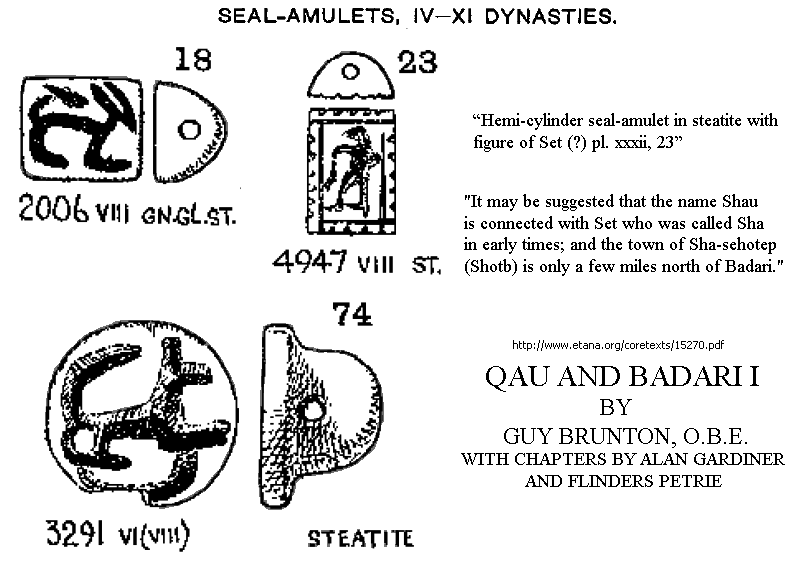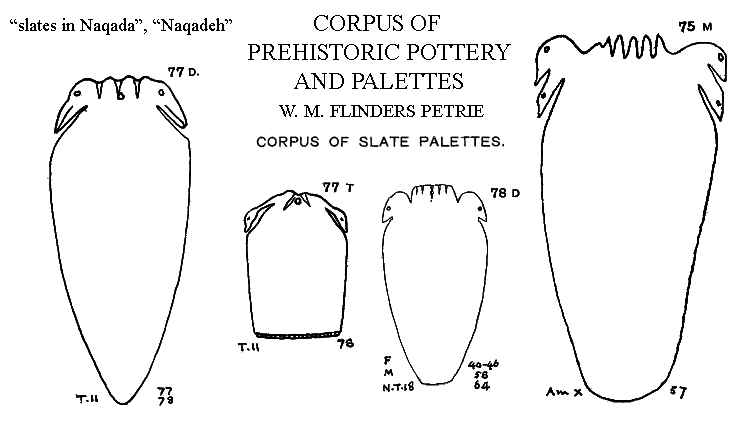
A couple of amulets may be a Sha,
Also, Brunton thinks no. 23, "Hemi-cylinder seal-amulet in steatite with
figure of Set (?)"

A couple of amulets may be a Sha,
Also, Brunton thinks no. 23, "Hemi-cylinder seal-amulet in steatite with
figure of Set (?)"
|
Budge's Hieroglyphic dictionary has, "Sha, a fabulous animal like a greyhound with a straight tail in the form of an axe", which we know is Set's representation in animal form. Guy Brunton in Qua and Badari I declares of the most ancient times:
"It may be suggested
that the name Shau is connected with Set who was
called Sha in early times; and the town of Sha-sehotep
(Shotb) is only a few miles north of Badari."
Brunton further notes:
"The most
interesting point to notice is that in the second
foundation the shrine is dual, though single in the
first. Badari is in the nome of " The Two Gods."
What the change in the number of the shrines
implies, has to be worked out. A coupling of the
worship of Set with that of Horus in the New
Kingdom may just possibly be the explanation."
There are a great many prehistoric slate palettes featuring a dual theme, and possibly Set and Horus are being represented in them:
|

| Even as late as the Second Intermediate Period, we see, as in a scarab from the Intermediate period, two falcons that represent Set and Horus. A Middle Kingdom pectoral shows two canine bodied entities to represent Set and Horus, aka "the two Lords". |


